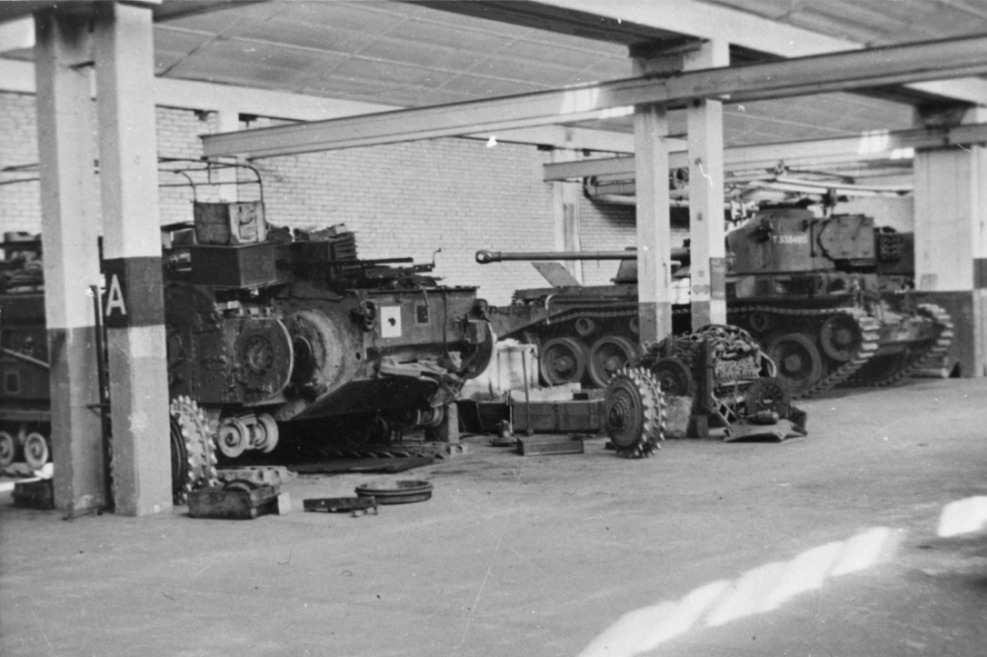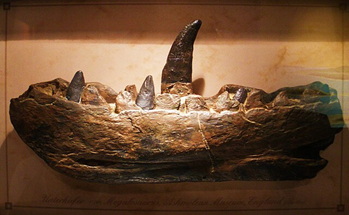What role did Lord Nuffield play in helping the war effort?
William Morris began repairing bicycles in Oxford as a 16 year old in 1893, before going on to build bicycles and then motor-bicycles. He started manufacturing cars in 1912, but turned the nascent car factory in Cowley over to armaments during the First World War. With peace restored, the factory resumed making cars and the Morris Motors company experienced unparalleled expansion and financial success over the next twenty years. Now known as Lord Nuffield, William Morris had become extremely wealthy, and the company he led, known as the Nuffield Organization was the largest car manufacturer in Europe. The Cowley factory which remained as its heart had been greatly expanded, and had introduced world leading production techniques.
Nuffield become concerned about the Nazi regime in Germany, and the government’s dilatory response, and so the company started work on developing tanks and aircraft engines in the late 1930s. With the outbreak of war, the vast Cowley factory was once again converted to manufacture armaments, and military equipment. The armaments included aerial and naval torpedoes, sea mines and mechanical sinkers to place them. The equipment produced included the whole range of material: from army trucks, utility and light reconnaissance vehicles; to the Cruiser and Crusader tanks, aircraft components such as engines for the Lancaster bomber and the Bristol Beaufighter, and wings and tail units for the Horsa glider; to everyday military essentials such as wirelesses and searchlights. Morris Radiators, in North Oxford, manufactured specialist radiators for fighter planes and bombers, as well as producing millions of helmets, and even field canteens for the army.
In 1940, Morris Motors were sub-contracted by De Havilland to produce complete Tiger Moth airplanes at Cowley, as their own Hatfield factory became dedicated to the more versatile Mosquito plane. The Tiger Moth was a pedestrian single-motor biplane used by the RAF for maritime reconnaissance and as a trainer for new pilots.
Perhaps more critically, the Cowley factory was engaged from the start of the war in repairing aircraft. Given the chronic shortage, it was vital to restore damaged aircraft if possible, and return them to the front line. On average, this cost a third of the cost of a new plane. The government set up the Civilian Repair Organisation (CRO) in secret to organise and supervise repairs in a network of 1500 factories and workshops throughout the country. In Oxford, for example, these included City Motors in Botley Road. In 1939, Nuffield had been invited to head up the CRO, which was initially housed at Cowley, but in 1940 moved to Merton College. The firms involved were mostly those already established in the maintenance or operation of aircraft, supplemented by specialists in wider engineering and woodworking. Sections of aircraft or even whole planes which had been repaired, were transported to airfields for re-assembly and test flying. During the war as a whole some 80,000 planes were repaired in this way.
The Cowley factory itself specialised in the repair of the important Hurricane and Spitfire fighter planes, as well as trainers made by Miles Aircraft and the Tiger Moths they were manufacturing. During the three months of the Battle of Britain in 1940, the Cowley Unit alone returned 150 planes to active service. Cowley Airfield had been built next to the factory in 1939-40, albeit against some local opposition, to speed up the repairs, and damaged planes were sometimes flown in directly for “while you wait” repairs, and returned to battle almost immediately. The airfield was also used by the Air Transport Auxiliary to fly new Tiger Moths direct to training airfields.
Cowley was also the base of a civilian salvage group (50MU) which worked seven days a week collecting and transporting damaged aircraft and parts, to firms participating in the CRO network. The Unit handled some 12,000 aircraft during the course of the war.
Not all recovered aircraft could be repaired, and the Morris factory housed one of the two Metal and Produce Recovery Units (MPRU) in the country, which cannibalized badly damaged aircraft of all nationalities, for parts and raw materials. Mangled wreckage of badly damaged aircraft awaiting processing, the ‘Cowley Dump’, was spread over an 100 acres of farmland next to the factory, piled three metres high, and laid out along eight miles of “roads”. The piles of twisted metal were immortalized in a painting made in 1941 called Totes Meer, (Dead Sea) by Paul Nash, and now in the Tate Gallery which showed damaged and, for propaganda reasons mainly German, planes. Thousands of tons of high-grade aluminium and other materials, such as rubber, steel, and plastics were reclaimed and reused. Samples of aluminium had to be taken from wrecked enemy aircraft, and carefully assessed in a laboratory before it could be reused.
All in all, the number of employees at Cowley doubled from its pre-war level to over 10,000 by the end of the war, the majority of whom were women, as most of the men in the regular workforce were conscripted into the forces. The Morris Motors Factory at Cowley played an essential role in the overall war effort. It was truly fortunate that it never suffered bomb damage. The Nuffield Organisation’s experience of modern production methods ensured that the factory was among the most efficient material producers in the world, and this is reflected in the equipment and armaments it produced being used in all theatres of the war. However, this could not have been achieved without the contribution and dedication of the whole workforce.
Written by MOX volunteer Stephen Struthers.
Want to write your own Oxford-inspired post? Sign up as a volunteer blogger.



